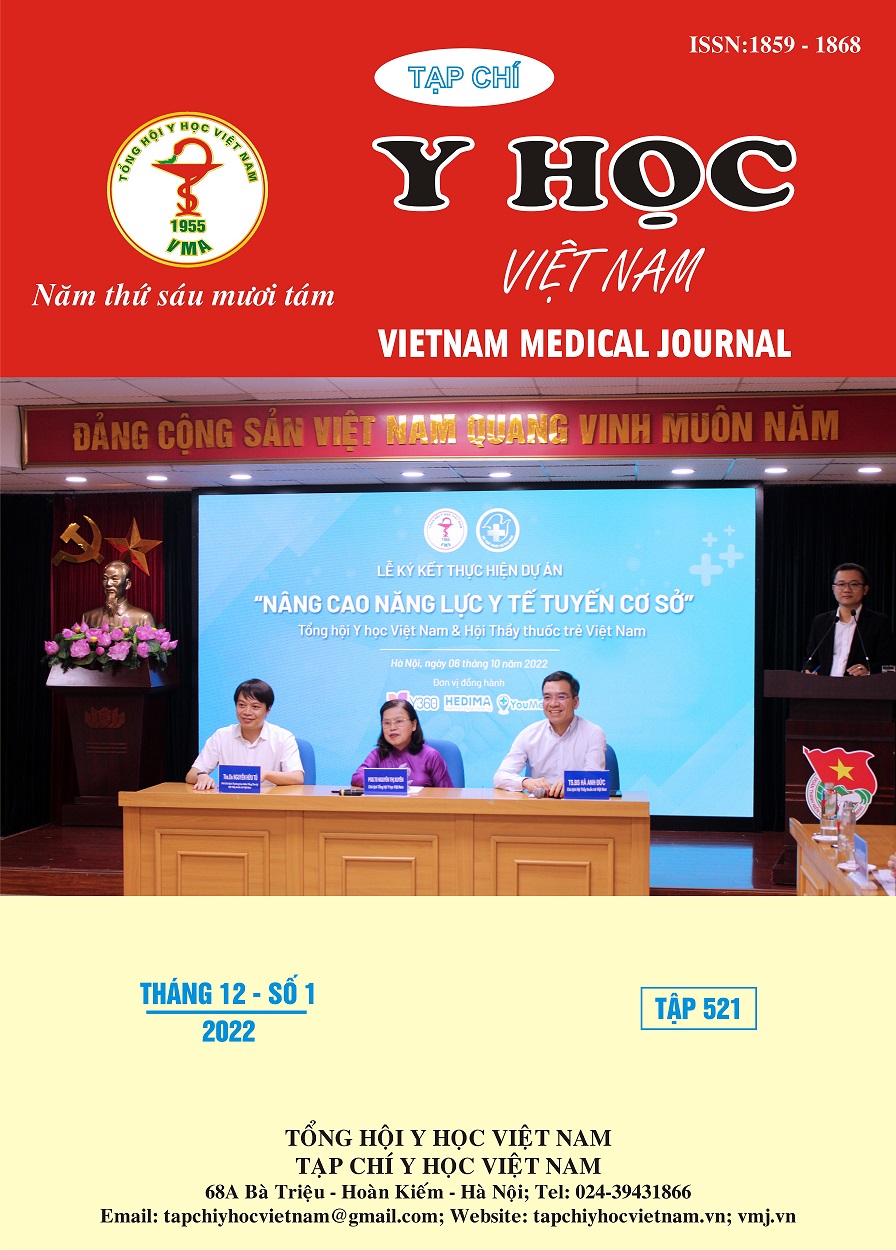SỰ BIỂU LỘ CỦA PCNA TRONG UNG THƯ BIỂU MÔ TUYẾN DẠ DÀY
Nội dung chính của bài viết
Tóm tắt
Mục tiêu: Đánh giá mức độ biểu lộ của dấu ấn PCNA và mối liên quan của nó với đặc điểm hình ảnh nội soi, mô bệnh học của bệnh nhân ung thư biểu mô tuyến vùng hang vị dạ dày. Đối tượng và phương pháp nghiên cứu: Nghiên cứu thực hiện trên 150 trường hợp ung thư biểu mô tuyến hang vị dạ dày được phẫu thuật tại bệnh viện K Hà Nội từ tháng 1 năm 2018 đến tháng 12 năm 2019. Phương pháp nghiên cứu: mô tả cắt ngang. Kết quả: PCNA biểu lộ cao ở 54,7% trường hợp ung thư biểu mô dạ dày. Biểu lộ cao của PCNA ở các dạng thâm nhiễm, polyp, loét và nấm với tỷ lệ lần lượt là 33,3%, 50%, 53,8% và 61,1% (p > 0,05). Theo phân loại mô học của Lauren, ung thư thể hỗn hợp có biểu lộ PCNA cao hơn so với ung thư thể ruột và ung thư thể lan tỏa (71,4% so với 61,5% và 29,4%, p < 0,01). Tỷ lệ biểu lộ của của PCNA không giống nhau giữa các thể nhú 100% thể hỗn hợp 71,4%, thể ống 63,6% thể nhày 44,4%, và thể tế bào nhẫn 29,4% với p < 0,05. Biểu lộ PCNA theo độ biệt hóa: 41,4% khối u biệt hóa tốt, 69,6% khối u biệt hóa vừa và 47,7% khối u biệt hóa kém (p > 0.05).
Chi tiết bài viết
Từ khóa
PCNA, ung thư biểu mô dạ dạ dày, thể ruột, thể tế bào nhẫn
Tài liệu tham khảo
2. Kamiya S., Rouvelas I., Lindblad M. , Nilsson M. (2018), "Current trends in gastric cancer treatment in Europe", Journal of Cancer Metastasis and Treatment,4, pp.35.
3. Matsusaka S., Nashimoto A., Nishikawa K., Miki A., Miwa H., Yamaguchi K. et al. (2016), "Clinicopathological factors associated with HER2 status in gastric cancer: results from a prospective multicenter observational cohort study in a Japanese population (JFMC44-1101)", Gastric Cancer, 19(3), pp.839-851.
4. Li H., Sandhu M., Malkas L. H., Hickey R. J. , Vaidehi N. (2017), "How Does the Proliferating Cell Nuclear Antigen Modulate Binding Specificity to Multiple Partner Proteins?", J Chem Inf Model, 57(12), pp.3011-3021.
5. Yin S., Li Z., Huang J., Miao Z., Zhang J., Lu C. et al. (2017), "Prognostic value and clinicopathological significance of proliferating cell nuclear antigen expression in gastric cancer: a systematic review and meta-analysis", Onco Targets Ther, 10, pp.319-327.
6. Li N., Deng W., Ma J., Wei B., Guo K., Shen W. et al. (2015), "Prognostic evaluation of Nanog, Oct4, Sox2, PCNA, Ki67 and E-cadherin expression in gastric cancer", Med Oncol, 32(1), pp.433.
7. Lee K. E., Lee H. J., Kim Y. H., Yu H. J., Yang H. K., Kim W. H. et al. (2003), "Prognostic significance of p53, nm23, PCNA and c-erbB-2 in gastric cancer", Jpn J Clin Oncol, 33(4), pp.173-179.
8. Czyzewska J., Guzińska-Ustymowicz K., Pryczynicz A., Kemona A. , Bandurski R. (2009), "Immunohistochemical evaluation of Ki-67, PCNA and MCM2 proteins proliferation index (PI) in advanced gastric cancer", Folia Histochem Cytobiol, 47(2), pp.289-296.


